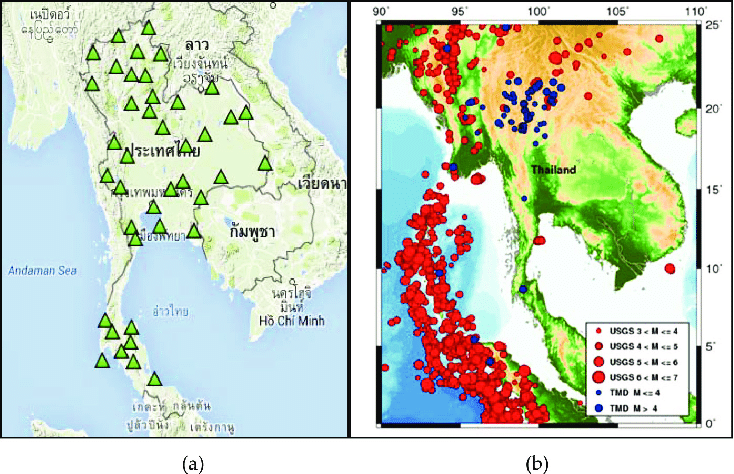Thailands Mass Wasting Threats
While Thailands biggest threat is not landslides, they area growing concern and danger for residents and officials in the country. Nearly 20% of all of Thailand is covered in mountainous plateaus and much of this leaves the country at risk for landslides because of the steep slopes and high elevations and increasing rainfall. Since before 2006 when he country issued a landslide vulnerability map, people and scientists have been noticing the higher and higher rates of slope failure and landslide damages. They have a long history of debris flows and rainfall induced landslides causing many casualties, and economic losses. Scientists discovered that out of 13 landslides from 1988 to 2007 all of them have between a 76 and 99% chance of reoccurring in the next fifty years due to slope failure or heavy downpours. There are many reasons Thailand finds so much trouble when it comes to mass wasting.
Firstly, Thailands soil makeup is mostly sand, silt, and clay. These soft sediments are easily maneuvered by rainfall, which in tropical climates like Thailand, is heavily prevalent. Since there is so much rainfall there is a lot of water content in the ground slowly eroding at the stability of mountains and hills. The erosion can been seen from the north all the way to the south because of the fact that rainwaters typically flood from the high mountains in the north all the way to lower elevations in the south.
Also, the drainage of water from the mountains to the flatlands causes even more damage in the face of flash floods. There are many events in the past years that have shown the damage flash floods can cause because of the debris flows they cause. These are prevalent in Thailand because of the mountains covering so much or the land few places to drain water too. When the water is flowing through the mountains the water will erode away at chunks of rocks along with smaller sediments carrying them down with the flow of the flood. This is what has caused most of the economic damage and loss of life in Thailand as many people like to live in areas where alluvial fans are located.
Since the case study I read came out many years ago Thailand has been slowly working to minimize landslide threats. over time there has been structures and supporting structure being out in place to better support building built on loose sediments and support for the sediment themselves. Not just this but they have placed a better warning system for those who live in landslide risk areas and reoccurring incidents.
References:



This was a very interesting read.
ReplyDelete